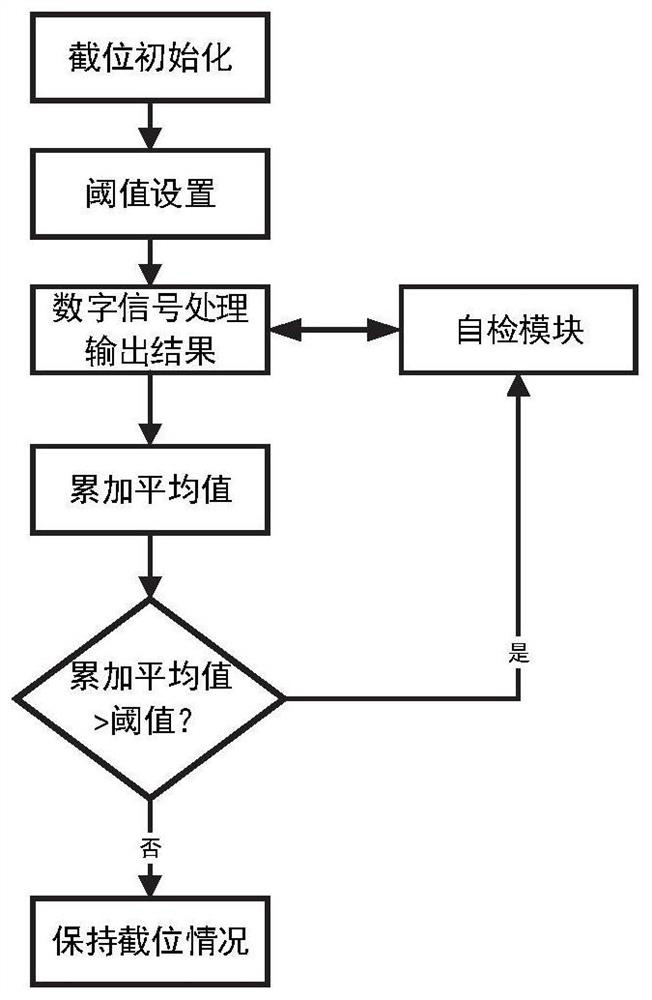Signal self-adaptive interception method and system of solar radio observation system
A solar radio and observation system technology, applied in the field of signal processing, can solve the problems of large truncation error, unfavorable calibration, and increase the difficulty of data processing of the solar radio observation system, so as to achieve the effect of improving sensitivity and measurement accuracy, and improving sensitivity
- Summary
- Abstract
- Description
- Claims
- Application Information
AI Technical Summary
Problems solved by technology
Method used
Image
Examples
Embodiment 1
[0034] The solar radio observation system studies solar activity phenomena through the observation and analysis of solar spectrum data. Solar radio includes three states, namely quiet solar radio, solar slow-changing radio and solar radio burst, solar radio burst and quiet solar radio The energies in the two states are different. Different frequencies and types of bursts have different energy multipliers compared with the calm state. For example, type II bursts have very high intensity, usually exceeding the quiet solar radio radiation by 100 to 1000 times.
[0035] like figure 1 The signal processing flow of the traditional solar radio observation system is shown, including: after the antenna receives the solar radio observation signal, the analog front-end performs amplification, filtering, mixing and other processing, and then the ADC converts the processed analog signal into a digital signal and transmits it to the FPGA In the FPGA, various digital signal processing such ...
Embodiment 2
[0054] This embodiment provides a signal adaptive truncation system of a solar radio observation system, including:
[0055] Initial module for setting initial truncation and comparison thresholds based on observed signals during quiet solar radio hours;
[0056] The processing module is used to take the average value of the observation signal of the solar radio burst time period after the maximum absolute value cumulative average processing as the upper limit value of the solar energy of the current time period;
[0057] The adjustment module is used to adjust the current truncation bit according to the comparison result of the solar energy upper limit value and the comparison threshold, so as to obtain the effective data bits required by the solar radio observation system, so as to observe the solar radio.
[0058] It should be noted here that the above-mentioned modules correspond to steps S1 to S3 in Embodiment 1, and the examples and application scenarios implemented by t...
PUM
 Login to View More
Login to View More Abstract
Description
Claims
Application Information
 Login to View More
Login to View More - R&D
- Intellectual Property
- Life Sciences
- Materials
- Tech Scout
- Unparalleled Data Quality
- Higher Quality Content
- 60% Fewer Hallucinations
Browse by: Latest US Patents, China's latest patents, Technical Efficacy Thesaurus, Application Domain, Technology Topic, Popular Technical Reports.
© 2025 PatSnap. All rights reserved.Legal|Privacy policy|Modern Slavery Act Transparency Statement|Sitemap|About US| Contact US: help@patsnap.com


